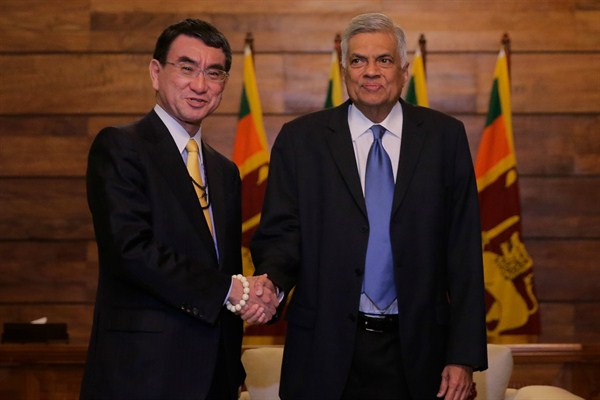Last month, Japanese Foreign Minister Taro Kono traveled to Sri Lanka, where he announced Tokyo’s plans to invest in several infrastructure projects, including a natural gas terminal. It was the first visit to Sri Lanka by a Japanese foreign minister in 15 years. Following similar Japanese investment projects in India and elsewhere in the region, the Sri Lanka trip appeared to be the latest sign of a growing strategy aimed at countering China’s massive Belt and Road Initiative, also known as One Belt, One Road. In an email interview, Shihoko Goto, the senior Northeast Asia associate at the Wilson Center’s Asia Program, discusses Japan’s response to China’s nearly $1 trillion infrastructure and development plans, the relative strengths of Japan’s development strategy, and how America’s changing policy in Asia has affected Tokyo’s calculus.
WPR: How has Japan responded to the challenge posed by China’s Belt and Road Initiative, and where has it made progress in terms of developing infrastructure partnerships in Asia?
Shihoko Goto: Like almost all other Asian nations, China is Japan’s single-largest trading partner. At the same time, the economic, as well as political, rivalry between the two countries is acute. That tension is seen in many spheres, and the Belt and Road Initiative is no exception. During his first tenure as Japan’s prime minister a decade ago, Shinzo Abe conceptualized an Indo-Pacific sphere where like-minded democracies, such as Japan and India, would work closely to promote democratic values, free trade and the rule of law. Abe’s Indo-Pacific strategy has gained broader momentum since then, including an endorsement from U.S. President Donald Trump during his visit to the region late last year. But while it is easy to say that the Indo-Pacific strategy competes head-on with China’s Belt and Road, that would hardly be a fair comparison, and it is not even clear that Japan is seeking to compete openly with China on this track.

